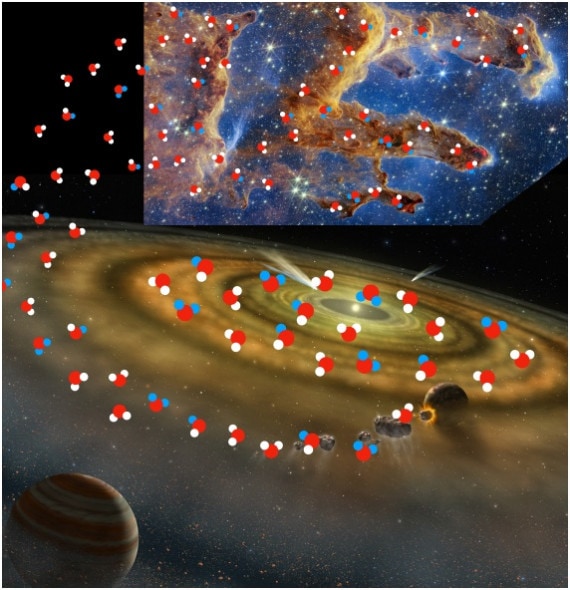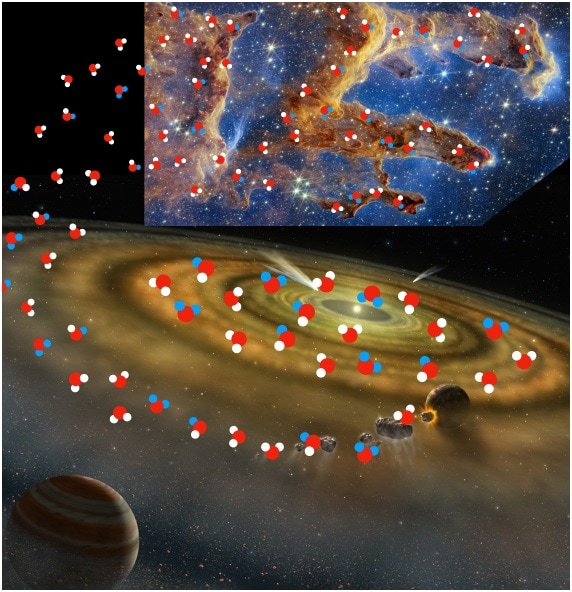A group of astronomers has detected “heavy” water in a protoplanetary disk for the first time: a rare form in which hydrogen is replaced by deuterium.
The water we know could have much older origins than the Sun. This is the hypothesis that emerges from a surprising discovery: a group of astronomers led by the University of Milan has identified “heavy” water (D₂O) for the first time in a protoplanetary disk, i.e. in the cloud of gas and dust where new planets are forming. Heavy water is a form of water in which hydrogen is replaced by deuterium, a heavier isotope, i.e. a proton, a neutron and an electron.
Heavy water. The study, published on Nature Astronomywas made thanks to observations made with the ALMA telescope, located in the Atacama desert in Chile, scientists analyzed the disk surrounding V883 Ori, a young star in the constellation of Orion, discovering unmistakable traces of doubly deuterated water, or “heavy water”.
“The presence of this rare form of water demonstrates that the water in the disk is older than the star itself,” explains Margot Leemker, first author of the research and astrophysicist at the University of Milan. «It was formed in the most primordial phases of the birth of the star system».
Where does the water come from? It is one of the fundamental elements of life, but its origin is still a mystery. For years, scientists have been divided between two hypotheses: the first hypothesis, also called “heredity”, wants that the water we find in planets and comets comes directly from the cloud of gas and dust from which the solar system was born. The second, called the “chemical reset”, suggests that the original water was destroyed during the formation of stars and then reformed at a later time, but with a different composition.
The discovery of V883 Ori seems to favor the first hypothesis. In fact, “heavy water” only forms in extremely cold environments and does not easily reform once destroyed: for this reason it is considered a sort of “ancient signature”. By analyzing the ratio between normal water (H₂O) and heavy water (D₂O), the researchers discovered that the composition of the disk is compatible with that expected from water inherited from the original cloud, and not subsequently reformed.
A clue to the origins of terrestrial water. This discovery changes the way we look at water on Earth. If V883 Ori’s water is older than its star, the same could be true for water in our planet’s oceans.
“It is an important step forward in understanding where water comes from in the Solar System and, ultimately, on Earth,” Leemker emphasizes. In other words, the water we drink today or that flows in rivers could be a cosmic legacy, born billions of years before the Sun — a fragment of that same primordial matter that gave rise to everything we know.


